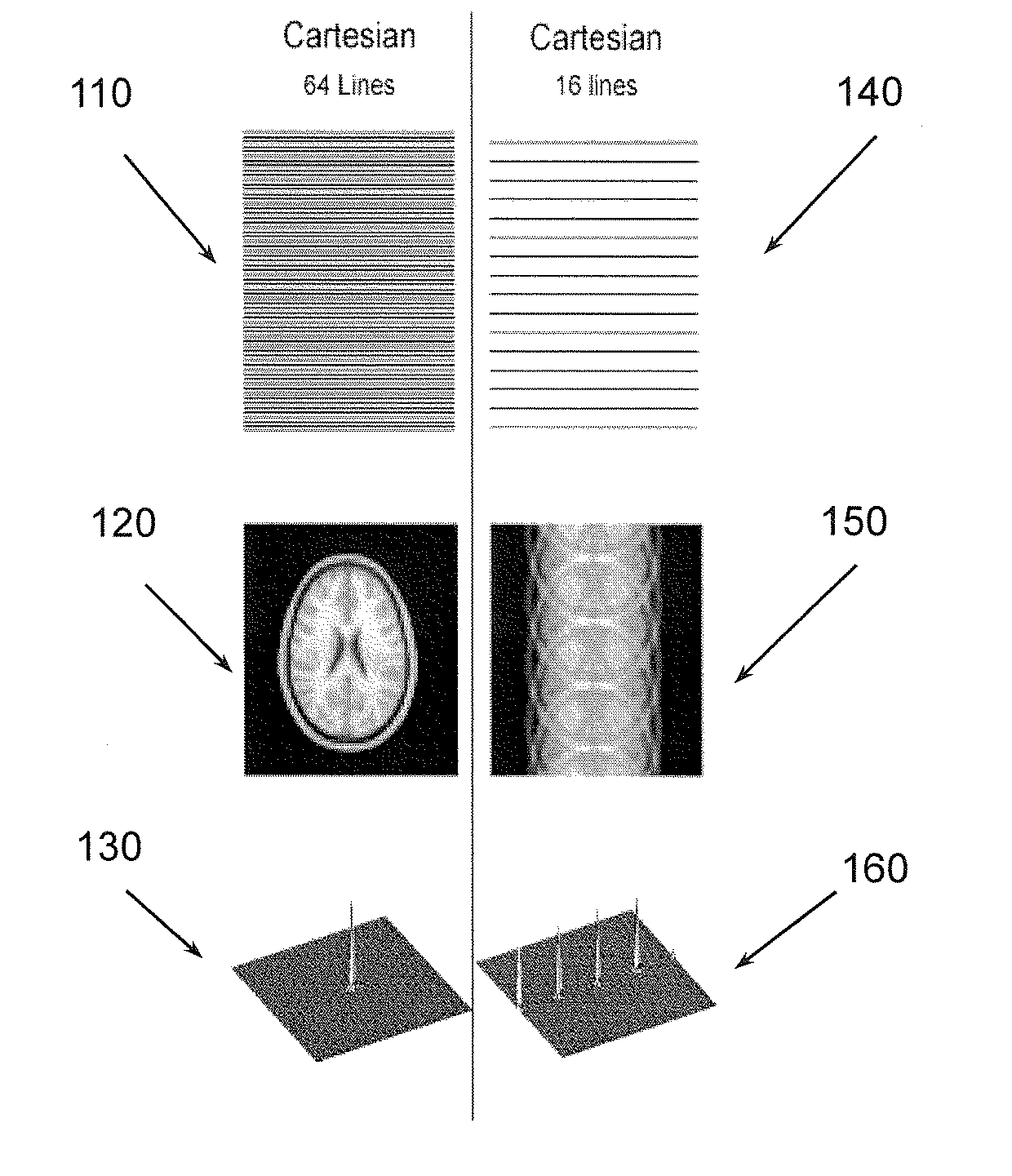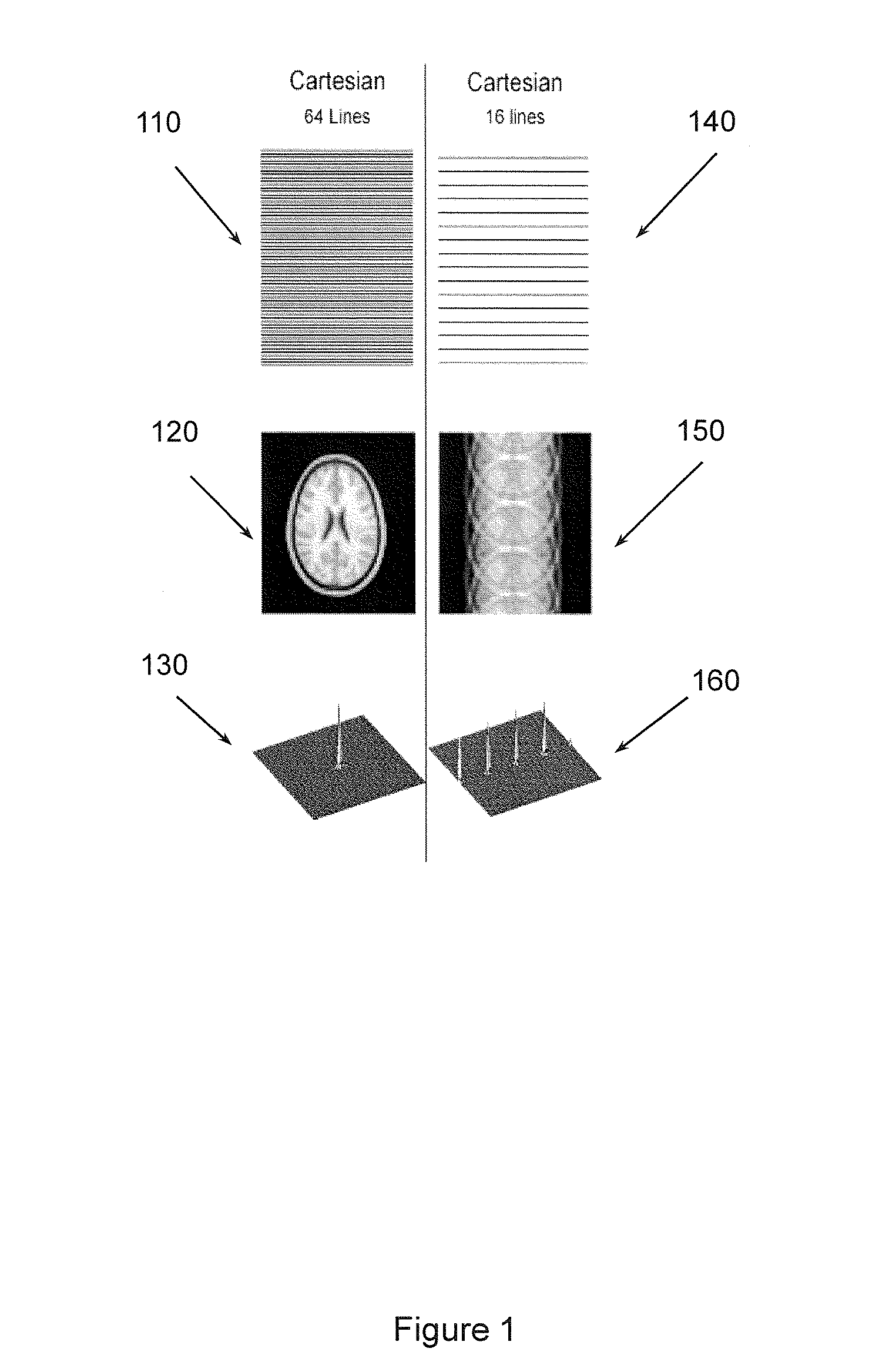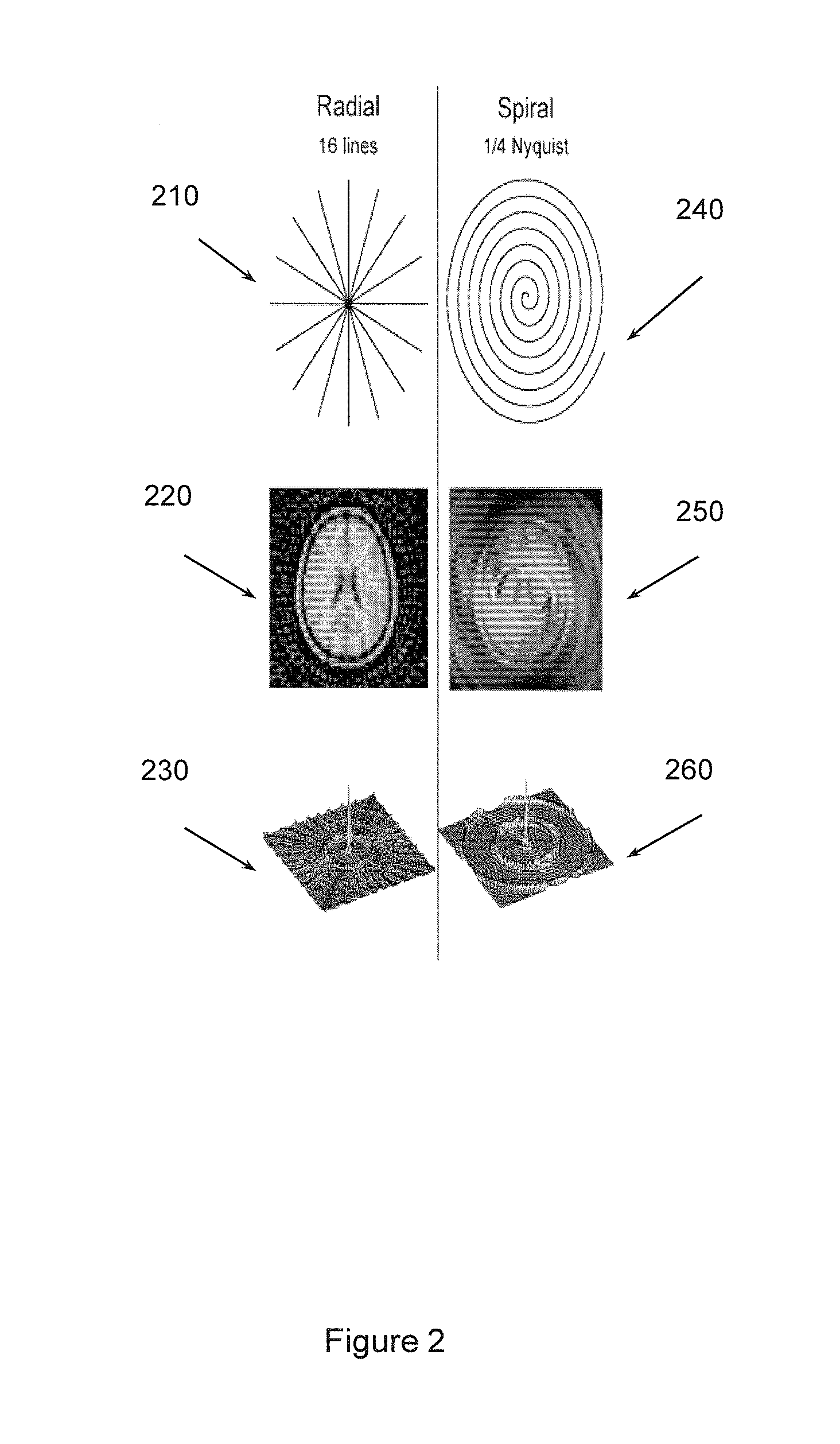Non-cartesian under-sampled multi-echo MRI
a multi-echo, non-cartesian technology, applied in the field of functional magnetic resonance imaging, can solve the problems of limited coverage, limited speed, and spatial distortion of the image, and achieve the effect of reducing the number of mri
- Summary
- Abstract
- Description
- Claims
- Application Information
AI Technical Summary
Problems solved by technology
Method used
Image
Examples
Embodiment Construction
Example apparatuses and methods perform non-Cartesian (e.g., radial) under-sampled MRI using a multi-echo (e.g., gradient recalled echo (GRE)) approach. The under-sampled MRI may acquire images used to map brain activity. Example apparatus and methods perform under-sampling to speed up MRI. Example apparatuses and methods use radial, or other non-Cartesian acquisitions, to mitigate issues with Cartesian under-sampling. With a radial acquisition, the acquisition passes through the center of k-space more than once. In one example non-Cartesian acquisition the trajectory will cross itself at least once. In another example non-Cartesian acquisition the trajectory will sample the same point two or more times. Example apparatuses and methods use a multi-echo approach where there are two or more TE per TR to facilitate improving image quality by selecting between data available at different TEs per TR.
FIG. 2 illustrates a radial under-sampling pattern 210 that produces image 220 with a PSF...
PUM
 Login to View More
Login to View More Abstract
Description
Claims
Application Information
 Login to View More
Login to View More - R&D
- Intellectual Property
- Life Sciences
- Materials
- Tech Scout
- Unparalleled Data Quality
- Higher Quality Content
- 60% Fewer Hallucinations
Browse by: Latest US Patents, China's latest patents, Technical Efficacy Thesaurus, Application Domain, Technology Topic, Popular Technical Reports.
© 2025 PatSnap. All rights reserved.Legal|Privacy policy|Modern Slavery Act Transparency Statement|Sitemap|About US| Contact US: help@patsnap.com



